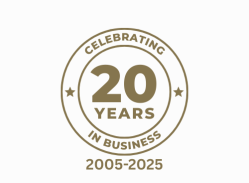Optimal IdM Celebrates 20 Years of Innovation and Customer Success
This year marks a significant milestone for Optimal IdM as we celebrate our 20th anniversary. To our customers, partners, and team members, thank you for being part of our incredible 20-year journey!
Zero Trust Architecture in Post-Merger Environments: A Practical Guide
The blog provides a practical five-phase implementation approach that leverages directory virtualization to enable immediate Zero Trust policies without waiting for lengthy directory consolidations, allowing organizations to achieve secure Day One collaboration while maintaining compliance and reducing breach risk.
The Hidden Costs of Directory Migration During M&A: What CFOs Need to Know
Welcome to the world of directory services integration—the overlooked quicksand that can swallow M&A value faster than you can say “return on investment.” Directory services might seem like an IT detail, but the approach you choose can mean the difference between a value-creating combination and a resource-draining quagmire.
RSA Conference 2025 Recap: Critical Lessons on AI and Identity Management
While AI commanded much of the spotlight, identity security emerged as the conference’s other dominant theme.
Extending IAM to the Next Level with Credential Management – ICAM: A Practical Guide
ICAM has emerged as the natural evolution of IAM, providing a more comprehensive framework for securing digital identities.
The Evolution of IAM: From Password Management to AI-Driven Security
IAM mirrors the broader evolution of enterprise technology, transforming from simple password management systems to sophisticated, AI-driven security platforms.
Balancing Security and User Experience in Modern IAM Implementation
Getting this balance wrong can lead to either security vulnerabilities or user frustration, both of which can significantly impact an organization’s operations. Read the blog now to learn more.
The Role of Zero Trust Architecture in Next-Generation IAM
Discover the benefits of implementing a Zero Trust Architecture in IAM
How Enterprise Single Sign-On (ESSO) Unlocks Efficiency In Business Operations
Explore the power of Enterprise Single Sign-On and take the first step towards a more secure, efficient, and productive digital workplace.
Automating Compliance: How IAM Streamlines Audit Processes and Reduces Manual Effort
The future of compliance is automated, and IAM is leading the way, transforming what was once a burdensome obligation into a streamlined, efficient process that adds value to the organization.













